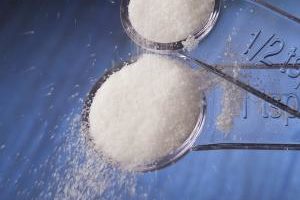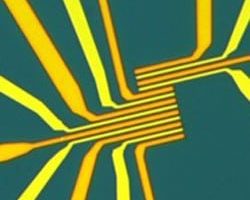Silicon
The first molybdenite microchip
After having revealed the electronic advantages of molybdenite, EPFL researchers have now taken the next definitive step. The Laboratory of Nanoscale Electronics and Structures (LANES) has made a chip, or integrated circuit, confirming that molybdenite…
New transistors: An alternative to silicon and better than graphene
Smaller and more energy-efficient electronic chips could be made using molybdenite. In an article appearing online January 30 in the journal Nature Nanotechnology, EPFL’s Laboratory of Nanoscale Electronics and Structures (LANES) publishes a stu…
Researchers insert identification codes into mouse embryos
Researchers from the Department of Cell Biology, Physiology and Immunology at Universitat Autònoma de Barcelona (UAB), in collaboration with researchers from the Institute of Microelectronics of Barcelona (IMB-CNM) of the Spanish National Research …
Technology in the extreme
Radio transmitters that can withstand temperatures of up to 900 oC could soon be dropped into the depths of the earth to provide early warning of a volcanic eruption.
The state-of-the-art technology being pioneered by experts at Newcastle Universi…
Silicon oxide circuits break barrier
Rice University scientists have created the first two-terminal memory chips that use only silicon, one of the most common substances on the planet, in a way that should be easily adaptable to nanoelectronic manufacturing techniques and promises to e…
Silicon Nanospheres Rank Among Hardest Known Materials
University of Minnesota researchers have made the first-ever hardness measurements on individual silicon nanospheres and shown that the nanospheres’ hardness falls between the conventional hardness of sapphire and diamond, which are among the hardest known materials. Being able to measure such nanoparticle properties may eventually help scientists design low-cost superhard materials from these nanoscale building blocks. Up to four times harder than typical silicon — a principal ingredient of computer chips, glass and sand — the nanospheres demonstrate that other materials at the nanoscale, including sapphire, may also have vastly improved mechanical properties.
One to go
Oh Vladimir. We had such high hopes for you. Five years after your countryman lost to Deep Blue, it looked for a while there that you would actually defeat its silicon successor, Deep Fritz. But now, after an initial spurt of victory, Fritz has pulled even, just one game away from condemning humans again to the trash heap of chess playing history. Sure, you sound optimistic. “I’m not depressed,” you say. “When you play such a wonderful game you can’t be. It could have gone either way. Fritz played such great defense. I think I can still win the match.” But with $1 million riding on the outcome of the “Brains in Bahrain” competition, can your nerves handle the pressure?
It’s the little things we remember



